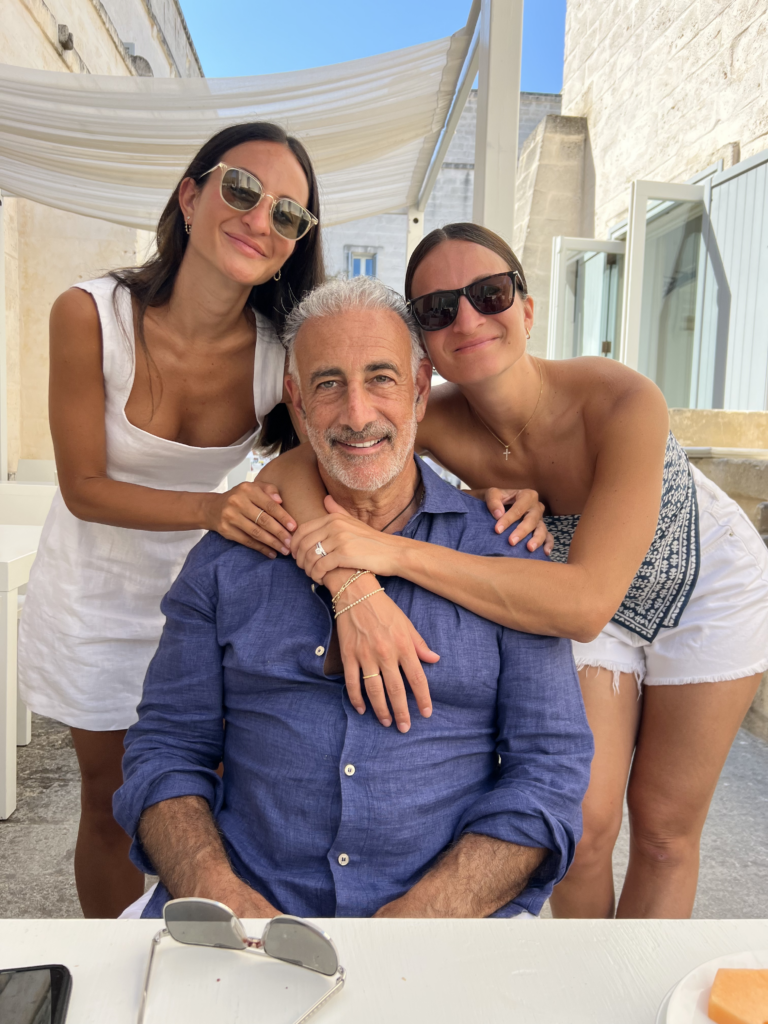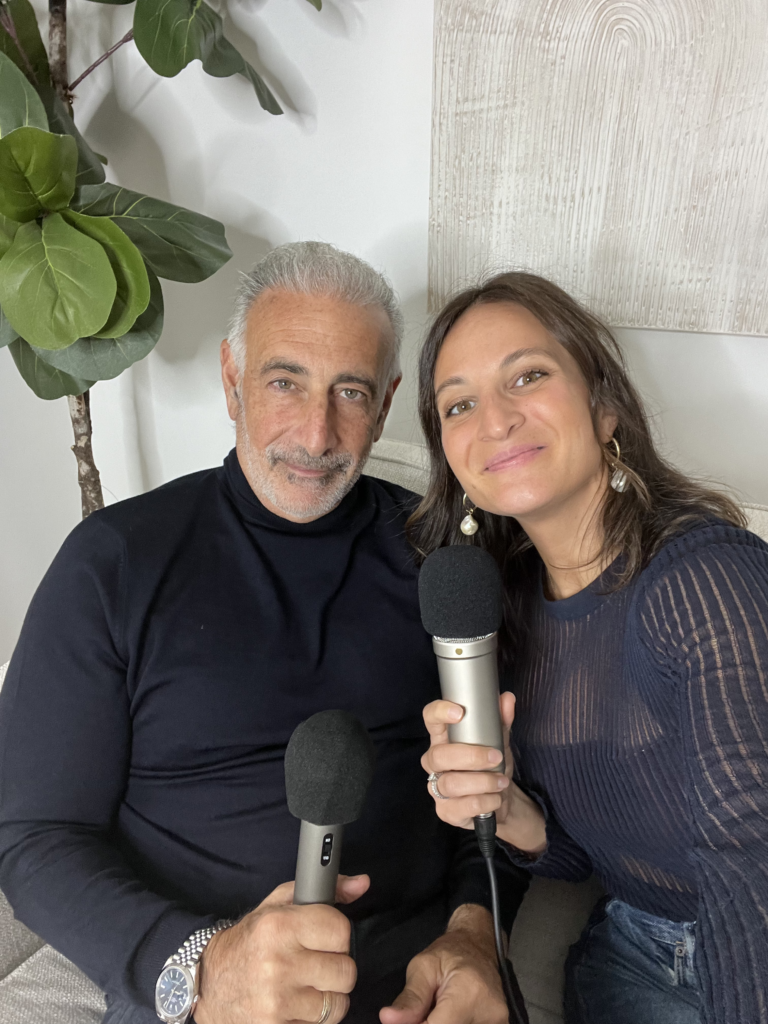
Sign up for a new account.
And get access to
The latest T1D content
Research that matters
Our daily questions
Sign up by entering your info below.
Reset Your Password
Don't worry.
We will email you instructions to reset your
password.
Peter Bongiorno was 64 years old when he was finally diagnosed with type 1 diabetes (T1D) after nearly ten years of being told he was prediabetic and on the verge of a type 2 (T2D) diagnosis. When the T1D diagnosis was finally determined, Peter and his family were shocked — because his daughter, Lauren Bongiorno, has lived with T1D for 23 years, since she was seven years old.
 Misdiagnoses are becoming all too common today because many healthcare practitioners aren’t aware that T1D can develop at any age. In fact, more than 50 percent of all T1D diagnoses are in people over 18 years old, but many of these people endure years of frustration and high blood sugar while being treated for T2D.
Misdiagnoses are becoming all too common today because many healthcare practitioners aren’t aware that T1D can develop at any age. In fact, more than 50 percent of all T1D diagnoses are in people over 18 years old, but many of these people endure years of frustration and high blood sugar while being treated for T2D.
Here, Peter and Lauren share the journey of his misdiagnosis story, serving as a clear reminder that anyone and everyone should consider getting screened for T1D autoantibodies.
We just assumed it couldn’t happen to him
“Obviously, we know people all over the world are diagnosed with T1D every day, but you don’t expect it to happen to somebody so close to you,” explains Lauren, CEO and founder of Risely Health, a virtual diabetes coaching company that has supported over 5,000 families and individuals affected by T1D. (Lauren is also a well-known influencer throughout the T1D community thanks to her supportive and educational videos on Instagram.)
While 85 to 90 percent of people diagnosed with T1D have no family history of the disease, a family history certainly increases your risk, according to research. In fact, children of fathers with T1D are significantly more likely to develop T1D compared to children of mothers with T1D.
With nearly 25 years between their diagnoses, Lauren wouldn’t have known until this year that this research applies to her own likelihood of developing the disease.
“We hear so many stories about parents with T1D who have kids, then the kids develop T1D,” says Lauren. “I wasn’t expecting the order of that story to change. I’ve been thinking so much about the potential of my future children developing T1D. It never occurred to me that I still had to worry about my parents or my sister.”
2015: when his A1c started rising
 “About ten years ago, I went in for an ordinary check-up,” recalls Peter, a trial lawyer who grew up in Queens, NY. “They found a calcium build-up, basically creating coronary occlusions. Further testing identified a cardiac aortic aneurysm, which is extremely vulnerable to any type of trauma or stress.”
“About ten years ago, I went in for an ordinary check-up,” recalls Peter, a trial lawyer who grew up in Queens, NY. “They found a calcium build-up, basically creating coronary occlusions. Further testing identified a cardiac aortic aneurysm, which is extremely vulnerable to any type of trauma or stress.”
Just pushing a little too hard at the gym — or any other routine exertion with daily life — could cause a spontaneous coronary aortic dissection (SCAD) which can quickly kill you if you don’t get to a highly skilled surgeon within 10 minutes.
“My doctor found this by accident,” says Peter. “He saved my life. I’ll be grateful to him forever.”
While being examined and treated for the aneurysm, Peter’s doctor discovered his A1c had risen to 5.5 percent. His fasting blood glucose level had risen from the high 70s (normal) to the mid-90s.
For Peter, it was a startling motivator to double down on his already diligent lifestyle habits.
“I became a vegetarian and started doing more cardio exercise,” explains Peter, who also had to adjust the intensity of his usual weightlifting routine to accommodate the restrictions caused by his aneurysm.
He also started reducing his carbohydrate intake, hoping it would help.
2017: A1c rising despite his best efforts
Still under the impression that he was approaching a prediabetes diagnosis, Peter was expecting to see a tremendous impact from his diligent nutrition and exercise regimen.
Instead, his A1c came back at 5.7 percent — qualifying for a prediabetes diagnosis. This motivated Peter to implement further restrictions by following a vegan diet. Meanwhile, he also began checking his blood sugar regularly with finger pricks and a glucose monitor.
Eventually, Peter added fish back into his otherwise vegan diet.
2019: Hitting 6.0% A1c
 When Peter’s A1c hit 6.0 percent with a fasting blood glucose of 110 mg/dL, his frustration grew. His doctor concluded he had unexplainable insulin resistance despite his lifestyle habits.
When Peter’s A1c hit 6.0 percent with a fasting blood glucose of 110 mg/dL, his frustration grew. His doctor concluded he had unexplainable insulin resistance despite his lifestyle habits.
“I increased my cardio even more,” explains Peter, trying to burn off glucose while always keeping his heart condition restrictions in mind. He was balancing weightlifting, aerobic exercise, and martial arts every week while continuing his diet.
At this point, he’d also lost nearly 20 pounds, but he wasn’t particularly overweight to begin with. Previously bulkier with muscle, Peter had slimmed down some muscle as he swapped out some weightlifting for more aerobic exercise.
2020: 6.3% A1c and resisting metformin
“That was frustrating,” recalls Peter of the 6.3 percent A1c along with a fasting glucose still above 100 mg/dL.
His doctor encouraged giving metformin a try, considering lifestyle habits hadn’t made a bit of difference, but Peter resisted the idea of medication. He desperately wanted to solve this problem on his own — certain that perhaps just a bit more discipline in his diet could help.
He started an extremely low-fat vegan diet that cuts dietary fat consumption down to less than 10 grams per day — including health oils, fish oils, etc. Controversial indeed, Peter was desperate to curb his rising A1c.
“My wife was getting really annoyed with me because I couldn’t eat anything, especially when we went to restaurants,” Peter recalls his tedious ordering process, asking for nearly everything on the menu item to be changed. (His wife didn’t exactly enjoy this dining experience, he recalls!)
He followed the diet rigidly for nearly seven months.
2021: A1c drops…just slightly
“I was deeply disappointed when my A1c came back at 5.9 percent after seven months on this rigid low-fat diet,” recalls Peter. “I was hoping to knock it down to 5.4 percent.”
Despite the reduction in his A1c, his fasting glucose was still above 100 mg/dL.
A few months later, Peter’s A1c was back in the 6s.
“By October, my A1c was back to 6.4 percent,” says Peter, recalling the frustration. “I stopped the vegan diet because it clearly wasn’t making a difference. I started adding in more healthy fats, I let go a little bit. I added in healthy complex carbs like oatmeal. But I still refused to take metformin.”
2022: A1c hitting new heights
“By the end of December, my A1c was up to 7.1 percent,” recalls Peter. “And I was checking my blood sugar all the time, with numbers usually between 100 to 130 mg/dL.”
Still certain he had T2D, his doctor and his wife convinced him to try metformin.
“My wife said, ‘Okay, you played your little game. Please go on metformin now,’” Peter laughs. “She was so tired of the extreme low-fat diet and the rising numbers.”
Meanwhile, Peter hadn’t been sharing any of this ongoing blood sugar saga with his daughter — the T1D expert coach!
“When he was diagnosed with the aortic aneurysm many years before, I had been really shook by that,” explains Lauren. “I’ve never lost anyone close to me, and this heart thing was really scary, really upsetting for me. I needed therapy to cope with it. After that, my dad started shielding me from his health stuff because he didn’t want me to worry.”
Meanwhile, Lauren’s T1D coaching business was growing rapidly — and the number of adults coming to her with a misdiagnosis of T2D was becoming increasingly frequent.
“I was visiting them in January of 2023,” explains Lauren, “and describing to them the story of this client who’d endured years of being treated for type 2 before getting the right diagnosis. And then it just hit me that his story was just like hers. It was a full-body sensation. I just suddenly realized he has type 1.”
Getting the right diagnosis
Thankfully, Peter’s primary care doctor heard Lauren’s argument for the T1D diagnosis — most likely LADA (latent autoimmune diabetes in adults), which is known to progress extremely slowly compared to a T1D diagnosis earlier in life.
His primary care ordered appropriate tests, including:
- C-peptide: which indicates how much insulin your pancreas is still producing
- Glutamic acid decarboxylase (GAD): looking for autoantibodies that indicate the immune system’s attack on insulin-producing cells
- Islet cell antibodies (ICAs): looking for autoantibodies that indicate the immune system’s attack on insulin-producing cells
While Peter’s C-peptide level looked relatively normal, his GAD and autoantibodies were extremely high. Still taking metformin, Peter was able to get his A1c back into the 6s while he awaited a formal diagnosis with an endocrinologist.
Unfortunately, the first available appointment with a new endocrinologist was five months out. Lauren contacted an endocrinologist within her coaching network and shared her father’s test results.
“She said, ‘I hate to inform you of this, but he does have type 1 diabetes’,” recalls Lauren. “She is a very experienced endocrinologist, and she was fascinated by how slow the progression of his disease was. She said his intense discipline and lifestyle changes probably helped delay his need for insulin.”
Meanwhile, Peter has started wearing a continuous glucose monitor (CGM) and using aerobic exercise to bring high blood sugars back into his goal range.
“I could start insulin, but my endocrinologist doesn’t want to do that yet,” explains Peter, grateful for this remarkably long honeymoon phase of continued insulin production. He’s looking into starting a GLP-1 medication to hopefully further delay his need for daily insulin therapy.
Dad’s diagnosis: how it feels to gain a T1D family member
“I cried at first because I’ve worked with so many parents of children right after their diagnosis, and even though you know they can handle it, you don’t want them to have to handle it,” recalls Lauren, empathizing with her clients’ heartbreak. “I cried not over the diagnosis itself but over the idea that one day when he starts insulin, he’s gonna wake up in the middle of the night sweating with a bad low or see those double-down arrows in the middle of the gym or having lunch with his friends.”
Lauren recalls adult clients who’ve come to Risely Health after being told by their primary care that they simply had T2D — even with an A1c of 12.4 percent. They were sent out the door with directions to exercise and eat better.
“If you catch T1D really early, it looks like type 2 or prediabetes,” says Lauren. “My father’s diagnosis has really opened my eyes to how challenging it can be for adults to get that accurate diagnosis because so many providers still think T1D only develops in childhood.”
When your T1D diagnosis is a relief
Besides having a daughter who happens to be an expert T1D patient and coach, Peter has a few other readily available sources of support, including his positive attitude.
“It was so frustrating, doing everything I could and still not getting results,” Peter recalls his intense efforts that left him feeling defeated when they didn’t lower his blood sugar. “Getting the right diagnosis is a relief.”
Despite being officially diagnosed with an autoimmune disease, Peter is counting his blessings.
“My biggest blessings are my wife, my in-laws, and my daughters,” says Peter with a smile that is both serious and sweet. “The most important thing in life is relationships and being surrounded by love. If you have those, you have everything. I am blessed in every category.”
LEARN MORE: Detect Type 1 Diabetes Before Symptoms Start
Ginger Vieira
Related Stories
1 Comment
Finally Diagnosed with Type 1 Diabetes at 64 Years Old After Type 2 Misdiagnosis Cancel reply
You must be logged in to post a comment.








I have just been diagnosed with LADA one month before my 65th birthday. Is there a LADA support group and counseling I can access?